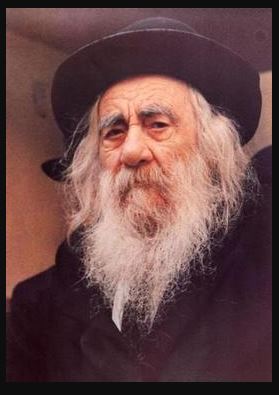It is explained that we have been commanded to be happy on the festivals in order to provide us with an opportunity to satiate our natural necessity for happiness in the proper manner, just like we have a necessity for food and rest [1].
It would seem then that the amount of this extra happiness ‘injection’ is twice a year for a week each time – corresponding to the festivals of Pesach and Sukkos, six months apart, and each a duration of one week. But on closer examination this distribution is not so equal: Sukkos is eight days whilst Pesach is only seven, and additionally there is another festival, Shavuos, which is only a single day?
When R’ Izaak Charif, a great Torah genius of his generation, sought a suitable groom for daughter, he decided that whoever could answer his difficult Torah question would become his son-in-law. Off he went to the famed yeshiva of Volozhyn where he gave a Torah discourse where he posed a powerful question on the Rambam leaving it unanswered. All the students toiled overnight to find an answer, each one keen to become the son-in-law of the famed Rabbi. But none succeeded.
As the Rabbi began on his way ‘empty handed’ the following morning, he heard one of the students (R’ Yosef Shleifer) shouting and running after him.
“Finally an answer,” the Rabbi thought, and he instructed his driver to halt.
“Yes, do you have an answer for me?” he asked the out-of-breath student.
“No, I don’t have an answer,” replied the student pleadingly, “but I need to know what the answer is otherwise I will not be able to sleep again tonight!”
R’ Izaak recognised that this student had a real desire for the Torah and realised that he would make the best son-in-law of all.
Some even say that, recognising the difficulty of his posed question, this is exactly what he was looking for all along and he answered “You want to know the answer? The answer is you!”
When R’ Chaim Shmulevitz was a young boy, he used to regularly visit his uncle, R’ Avraham Yaffen, the Rosh Yeshiva of Navardok. One time he asked his uncle to show him the best boys in the Yeshiva. Three boys were pointed out to him: “this one is the most diligent”; “he is the most knowledgeable” and “that one has the greatest fear of Heaven”.
“But who is the very best one?” R’ Chaim persisted.
R’ Yaffen took his nephew to a different corner and pointed at a different boy altogether.
“If he is the best boy, why didn’t you point him out before?” asked R’ Chaim.
“He is in a different league:” came the answer, “he has the biggest drive to succeed.”
And indeed he remained so his entire life. He became the legendary Torah leader of his generation: R’ Yaakov Yisroel Kanievsky, the ‘Steipler gaon’.
Between Pesach and Shavuos, the festival of the giving of the Torah, we count the ‘Omer’, whereby we demonstrate our looking forward and our soul’s intrinsic desire to be connected to Torah and spirituality [2]. Pesach and Shavuos are two halves of the same festival: on Pesach we attained physical freedom, and on Shavuos we attain our spiritual freedom.
The main happiness on Shavuos comes when we recognise that Torah and spirituality is unlike anything on this world; it is different. It will not come to us; we must, each one of us, on his, or her, own level, be a ‘mevakesh’ – to seek it out and desire to make a connection.
Have a desirable and happy Shavuos and a connected Shabbos,
Dan.
First story: Peer Hador
Second story: heard from R’ Moshe Aharon Stern
[1] Sefer Hachinuch, commandment 488
[2] Ibid. 306










